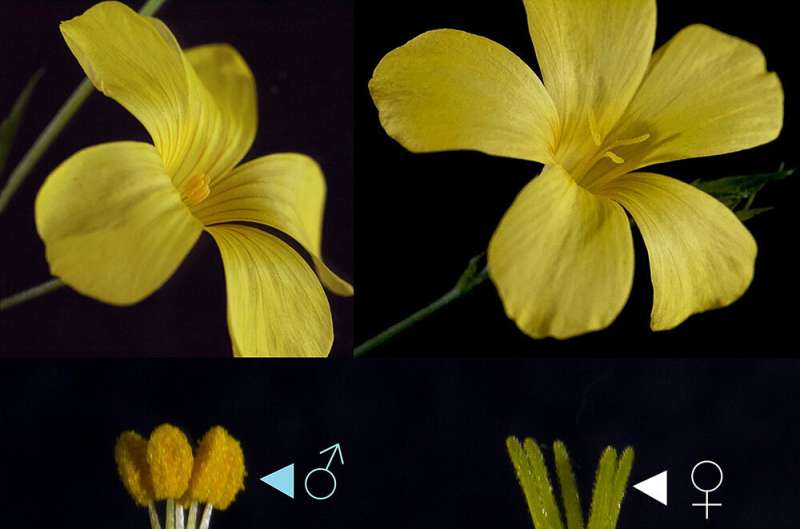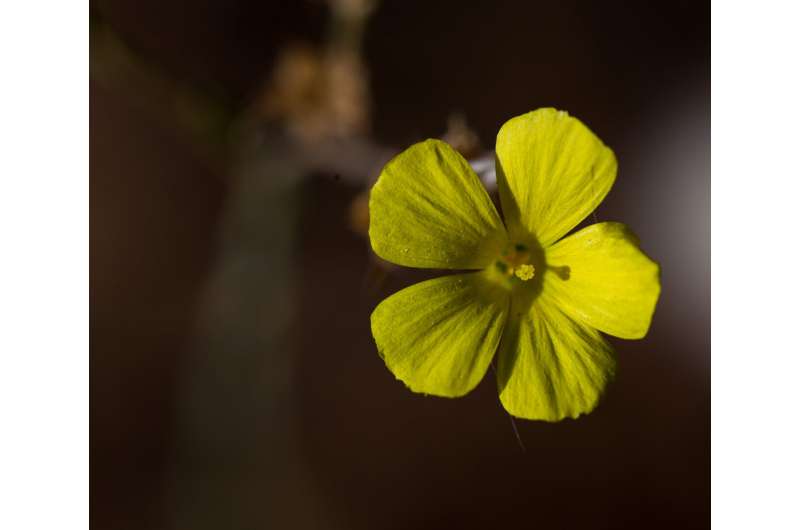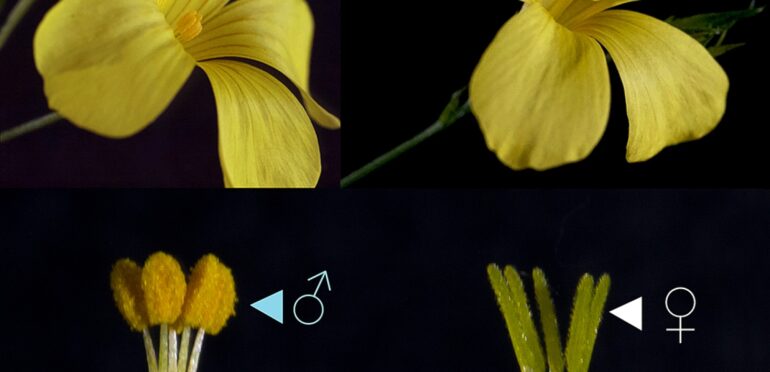Scientists have solved the century-old mystery of a supergene that causes efficient cross-pollination in flowers. The results show that sequence length variation at the DNA level is important for the evolution of two forms of flowers that differ in the length of their sexual organs. The study is published today in Current Biology.
Gardeners and botanists have known since the 1500s that some plant species have two forms of flowers that differ reciprocally in the length of their male and female sexual organs. Darwin first proposed that such distylous flowers promoted efficient cross-pollination through insect pollinators. Early geneticists showed that the two forms of flowers were controlled by a single chromosomal region likely harboring a cluster of genes, a supergene. But until recently this supergene had never been sequenced.
Now, researchers at Stockholm University, together with partners at Uppsala University, Durham University, University of Granada, and University of Seville, have solved the mystery of the supergene. They studied a system where already Darwin described distyly, wild flaxseed species, Linum, and used modern DNA sequencing methods to identify the supergene.
Surprisingly, they found that the supergene responsible for differing lengths of male and female sexual organs itself varied in length. Specifically, the dominant form of the supergene contained about 260,000 base pairs of DNA that were missing from the recessive form. The 260,000 base pair stretch of DNA harbored several genes likely to cause length variation in sexual organs.

The two forms of flowers of fine flax, Linum tenue, differ reciprocally in the length of their sexual organs. The top panel shows entire flowers whereas the bottom part shows the reproductive structures within the flowers, with arrows indicating male and female sexual organs. © Juanita Gutiérrez-Valencia
“These results were really surprising to us, because a similar genetic makeup of the supergene that governs distyly has previously been identified in another system, primroses, where it evolved completely independently,” said Tanja Slotte, Professor in Ecological Genomics at Stockholm University and senior author of the study.
“Not only has evolution repeatedly led to similar variation in the flowers of primroses and flaxseed species, it has also relied on a similar genetic solution to achieve this feat,” said Juanita Gutiérrez-Valencia, Ph.D. student at Stockholm University and first author of the study.

Linum tenue flowers photographed in the field in Spain © Benjamin Laenen and Aurélie Désamoré
These findings provide new insights into the exceptional power of evolution to find convergent solutions to widespread adaptive challenges such as the need for flowering plants to be cross-pollinated.
“Distyly is ultimately a mechanism for efficient cross-pollination. Understanding pollination mechanisms is particularly important today given climate change and challenges faced by both plant and insect pollinator populations,” said Professor Tanja Slotte.
More information:
Tanja Slotte, Genomic analyses of the Linum distyly supergene reveal convergent evolution at the molecular level, Current Biology (2022). DOI: 10.1016/j.cub.2022.08.042. www.cell.com/current-biology/f … 0960-9822(22)01364-1
Provided by
Stockholm University
Citation:
The long and short of a supergene for efficient pollination (2022, September 9)
